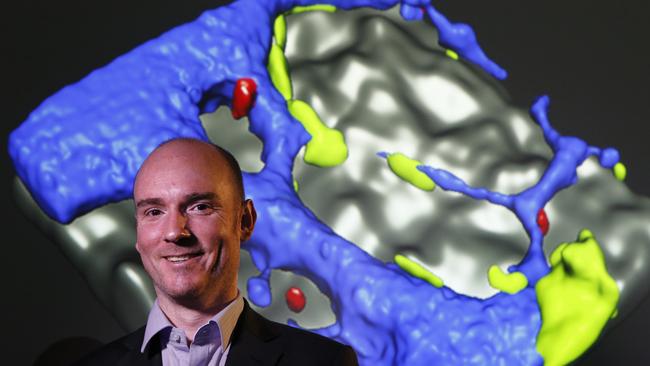Walter and Eliza Hall Institute of Medical Research 4D microscope to rewrite current medical thinking
THE future of medical research is 4D. New microscope technologies, still in their infancy, are giving Melbourne researchers a never-before-seen view of cells and tissue in real-time.

VIC News
Don't miss out on the headlines from VIC News. Followed categories will be added to My News.
THE future of medical research is 4D.
New microscope technologies, still in their infancy, are giving researchers a never-before-seen view of cells and tissue in real time.
The Walter and Eliza Hall Institute of Medical Research unveiled its new Light Lattice Sheet microscope this week, after a seven-month build, that researchers say will rewrite assumptions of current medical treatment and diagnosis.
“Imagine trying to watch the AFL Grand Final and understand what happened from one picture that captures one second of the game. You can’t,” said WEHI’s laboratory head in the immunology division, Dr Edwin Hawkins.
“New technology has allowed you to look at one part of the field, every 10 seconds. But now we can look at the whole game in real time.
“It’s a game changer.”
Instead of looking at interacting cells in a Petri dish, or dead cells on a slide, the technology can produce a 3D construction of the whole organ, allowing researchers to see how each cell interacts in situ, in real time, in high definition.
Immune cells — that look like moving ping pong balls under traditional microscopes — become as detailed as seeing the tiny fur on a tennis ball.
And it’s these cell properties — the shape of proteins on the surface, how tissues react when hit with chemotherapy, and a breakdown of the 15 seconds it takes for malaria parasites to invade cells, that will give researchers clues about potential new treatments.

A queue has already started among WEHI researchers eager to be the first to use the new microscope, which was built by Dr Lachlan Whitehead and Dr Niall Geogheganm.
The microscope, part of the new Dr Kelly Rogers-led Centre for Dynamic Imaging, will allow researchers to complete experiments they had previously only been able to dream about.
Dr Hawkins is planning to look at how the proteins on the surface of cancer cells change before and after chemotherapy.
The microscope, based on the design of Nobel prize winner physicist Eric Betzig, will sit on a table pumped up by compressed air to isolate it from the vibrations construction of WEHI's childcare centre and the East-West link rail tunnel under Parkville.


